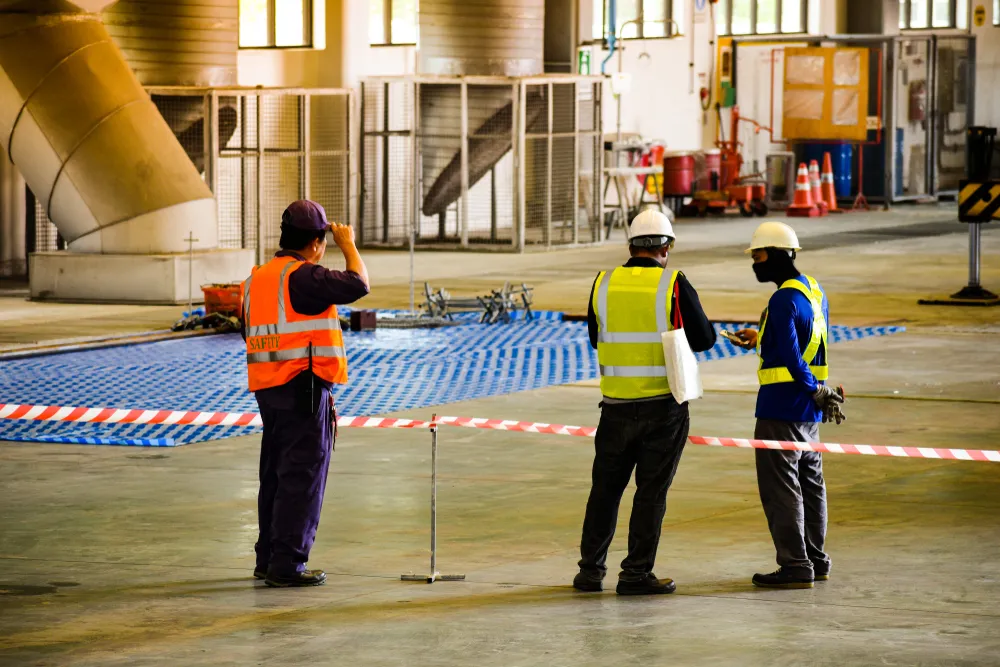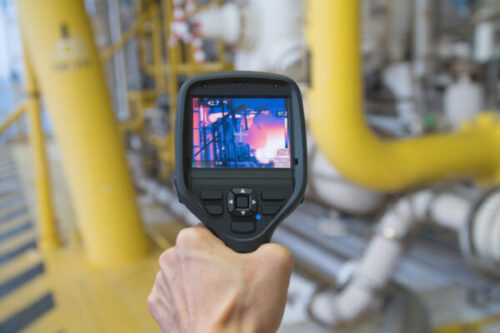4 Easy Facts About Roar Solutions Explained
4 Easy Facts About Roar Solutions Explained
Blog Article
A Biased View of Roar Solutions
Table of ContentsExcitement About Roar SolutionsRoar Solutions for Beginners9 Simple Techniques For Roar Solutions
In such an atmosphere a fire or surge is feasible when three basic problems are fulfilled. This is usually described as the "harmful area" or "combustion" triangular. In order to safeguard installments from a prospective surge an approach of evaluating and classifying a potentially unsafe location is required. The objective of this is to make sure the right selection and installation of devices to ultimately prevent a surge and to guarantee safety and security of life.
(https://www.wattpad.com/user/roarsolutions)
No equipment ought to be installed where the surface temperature of the equipment is higher than the ignition temperature level of the given risk. Below are some typical dirt harmful and their minimal ignition temperature. Coal Dust 380C 225C Polythene 420C (melts) Methyl Cellulose 420C 320C Starch 460C 435C Flour 490C 340C Sugar 490C 460C Grain Dust 510C 300C Phenolic Material 530C > 450C Aluminium 590C > 450C PVC 700C > 450C Residue 810C 570C The probability of the threat existing in a concentration high sufficient to trigger an ignition will differ from area to place.
In order to categorize this risk an installation is separated into areas of threat depending upon the quantity of time the dangerous is existing. These locations are described as Areas. For gases and vapours and dirts and fibres there are three areas. Zone 0 Zone 20 An unsafe ambience is extremely likely to be existing and may exist for lengthy periods of time (> 1000 hours each year) and even continuously Zone 1 Area 21 A dangerous environment is possible yet unlikely to be existing for extended periods of time (> 10 450 C [842 F] A classification of T6 means the minimal ignition temperature is > 85 C [185 F] Hazardous location electrical tools maybe made for use in greater ambient temperatures. This would certainly indicated on the rating plate e.g. EExe II C T3 Ta + 60C( This suggests at 60C ambient T3 will not be gone beyond) T1 T1, T2, T3, T4, T5, T6 T2 T2, T3, T4, T5, T6 T3 T3, T4, T5, T6 T4 T4, T5, T6 T5 T5, T6 T6 T6 A T Class ranking of T1 implies the optimum surface temperature created by the instrument at 40 C is 450 C. Thinking the connected T Course and Temperature score for the equipment are proper for the location, you can always make use of an instrument with a much more stringent Division ranking than required for the area. There isn't a clear solution to this question unfortunately. It truly does rely on the sort of devices and what repairs need to be executed. Tools with particular examination treatments that can't be done in the area in order to achieve/maintain 3rd party score. Have to come back to the factory if it is prior to the devices's solution. Area Fixing By Authorised Employee: Complicated testing may not be needed nonetheless specific procedures may need to be followed in order for the devices to preserve its 3rd party ranking. Authorized employees must be employed to perform the work correctly Repair work should be a like for like replacement. New component must be thought about as a straight substitute needing no special testing of the equipment after the repair service is total. Each item of equipment with a dangerous rating should be assessed separately. These are described at a high level below, but also for more thorough details, please refer straight to the guidelines.
Unknown Facts About Roar Solutions
The devices register is a detailed database of tools documents that includes a minimum collection of fields to identify each thing's place, technical criteria, Ex lover category, age, and ecological data. The proportion of In-depth to Close examinations will certainly be identified by the Equipment Threat, which is examined based on directory ignition risk (the chance of a resource of ignition versus the probability of a combustible environment )and the hazardous location classification
( Zone 0, 1, or 2). Implementing a robust Risk-Based Inspection( RBI )method is essential for making certain compliance and safety in handling Electric Devices in Hazardous Locations( EEHA).
9 Easy Facts About Roar Solutions Shown

In regards to explosive threat, a harmful area is a setting in which an explosive ambience is existing (or may be anticipated to be present) in amounts that require unique precautions for the building and construction, installation and use of equipment. high voltage courses. In this write-up we check out the obstacles dealt with in the office, the danger control measures, and the needed competencies to function safely
It issues of contemporary life that we make, save or handle a series of gases or fluids that are deemed flammable, and a variety of dusts that are considered flammable. These substances can, in specific problems, form explosive environments and these can have significant and awful effects. A lot of us recognize with the fire triangular get rid of any one of the 3 components and the fire can not occur, however what does this mean in the context of harmful locations? When breaking this down into its easiest terms it is essentially: a mix of a particular amount of release or leak of a specific material or product, blending with ambient oxygen, and the presence of a source of ignition.
In the majority of circumstances, we can do little concerning the degrees of oxygen airborne, however we can have considerable impact on resources of ignition, as an example electrical devices. Dangerous areas are documented on the dangerous area classification drawing and are identified on-site by the triangular "EX" sign. Here, among various other crucial info, zones are split into 3 kinds depending upon the risk, the possibility and duration that an eruptive ambience will certainly exist; Zone 0 or 20 is considered one of the most dangerous and Zone 2 or 22 is regarded the least.
Report this page